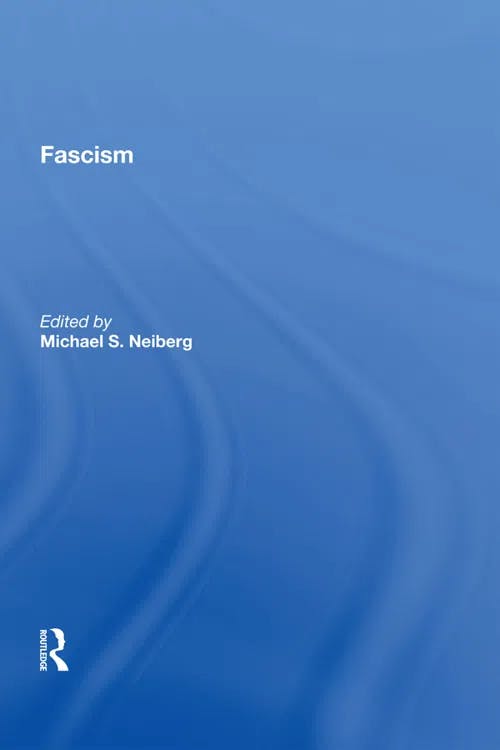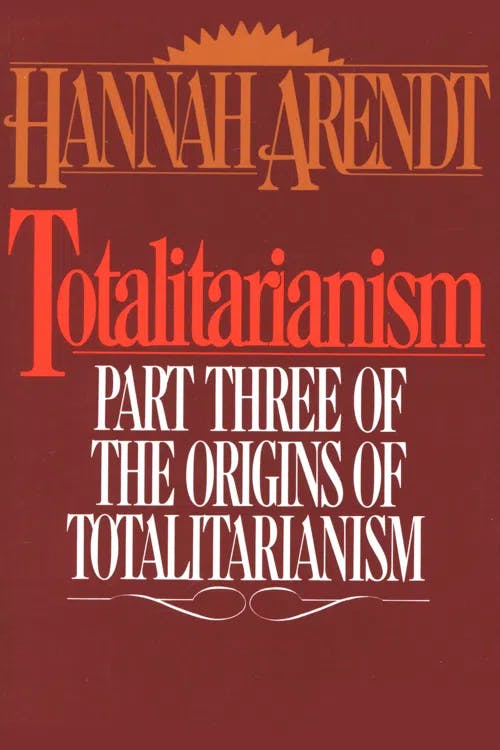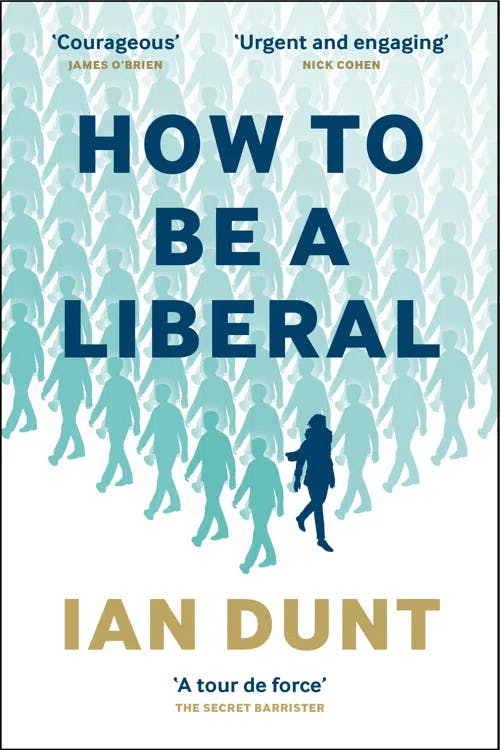What is Fascism?
MA, English Literature (University College London)
Date Published: 03.05.2023,
Last Updated: 27.03.2024
Share this article
Defining fascism
The concept of “fascism” has become a cultural touchpoint, taking on an extended web of shifting meanings and connotations. There is much debate over which of these precise meanings should be ascribed to “fascism,” so it can be difficult to arrive at a clear and uncontroversial definition.
As Roger Griffin writes,
not only is it impossible simply to state ‘what fascism is’ but, a century after the word came into being to refer to a new Italian political movement and programme, its definition as a term of political and historical analysis is still bewilderingly varied and hotly debated. (Fascism, 2018)
Roger Griffin
not only is it impossible simply to state ‘what fascism is’ but, a century after the word came into being to refer to a new Italian political movement and programme, its definition as a term of political and historical analysis is still bewilderingly varied and hotly debated. (Fascism, 2018)
With these conceptual caveats in place, then, what does “fascism” refer to in general? Although a perfect definition may be out of reach, what are the basic fundamental characteristics of fascism that are widely agreed upon?
Roughly speaking, fascism is generally understood as a far-right, authoritarian, anti-democratic, ultranationalist political ideology. Key examples include the totalitarian dictatorships of Hitler and Mussolini, which controlled the lives of citizens, restricted democratic institutions, and violently suppressed any form of dissent. Robert Paxton describes fascism as:
a form of political behavior marked by obsessive preoccupation with community decline, humiliation, or victimhood and by compensatory cults of unity, energy, and purity, in which a mass-based party of committed nationalist militants, working in uneasy but effective collaboration with traditional elites, abandons democratic liberties and pursues with redemptive violence and without ethical or legal restraints goals of internal cleansing and external expansion. (The Anatomy of Fascism, 2004)
Along similar lines, Griffin favors a shorter working definition: “Fascism is a genus of political ideology whose mythic core in its various permutations is a palingenetic form of populist ultranationalism” (2018). In other words, for Griffin the single most defining feature of fascism is that it is founded upon a central myth of ultranationalist rebirth. In Griffin’s view, this revolutionary aspect distinguishes fascism from other forms of authoritarian nationalism.
Some scholars and commentators favor a slightly looser interpretation of fascism. Madeleine Albright, for example, sees a fascist as:
someone who identifies strongly with and claims to speak for a whole nation or group, is unconcerned with the rights of others, and is willing to use whatever means are necessary—including violence—to achieve his or her goals. (Fascism: A Warning, 2018)
Madeleine Albright
someone who identifies strongly with and claims to speak for a whole nation or group, is unconcerned with the rights of others, and is willing to use whatever means are necessary—including violence—to achieve his or her goals. (Fascism: A Warning, 2018)
As we will explore, debates around the definition of fascism continue to be pertinent in the present day. Many political parties and governments across the world exhibit traits which are consistent with definitions of fascism, and fascist ideologies continue to inspire acts of terrorism. Before addressing the current and future guises of fascism, however, let’s take a look at the origins of fascism and explore its specific characteristics in more depth.
Mussolini’s Italy and the origins of fascism
Etymologically, “fascism” can be traced back to the fasces — a “Roman symbol of state authority” (Griffin, 2018) comprising a bundle of rods attached to an axe. It was not until early twentieth century Italy, however, that “fascism” as we know and understand it today emerged.
Following the First World War, Italy experienced widespread discontent and social upheaval, and the specter of a socialist revolution threatened to destabilize many of the old hierarchies. In March 1919, amid this febrile atmosphere, “Mussolini founded the first of a planned network of Fasci italiani di combattimento (Italian Combat Leagues)”:
Within weeks the new force in Italian politics was being called Fascism [...] and by 1922 a new generic term, fascism, entered the political lexicon. (Griffin, 2018)
Appropriating both the fasces name and symbol for his combat leagues and subsequent National Fascist Party of Italy, Mussolini began his violently authoritarian mission of ultranationalist rebirth. The appropriation of a Roman symbol was no accident, as Mussolini’s fascists harked back to the “glory days” of the Roman Empire as evidence of their supposed national superiority — and they aimed to recreate this lost empire in the twentieth century. As Albright notes, “This was how twentieth-century Fascism began: with a magnetic leader exploiting widespread dissatisfaction by promising all things” (2018).
In the years that followed, Mussolini’s fascists seized ever-greater levels of political influence and power, and became increasingly totalitarian and tyrannical as they did so. Any impediment to their power was either removed or co-opted, with their control eventually extending over each level of the state apparatus, the church, the courts, the media, and other Italian institutions. Stirring up his base with visions of a new empire, Mussolini extended his sights beyond Italy’s borders — eventually invading Abyssinia (Ethiopia) in 1935 and pursuing further campaigns of conquest alongside Germany in the Second World War.
The term “fascism,” then, and the first avowedly fascist political movement originate with Mussolini’s National Fascist Party in Italy. But outside of the specific term, many groups throughout history have displayed characteristics of fascism (even if they are not named as such). Employing a more nuanced definition of fascism, for example, Robert Paxton traces its origins to “the late 1860s in the American South”:
But it is further back in American history that one comes upon the earliest phenomenon that seems functionally related to fascism: the Ku Klux Klan. Just after the Civil War, some former Confederate officers, fearing the vote given to African Americans by the Radical Reconstructionists in 1867, set up a militia to restore an overturned social order. The Klan constituted an alternate civic authority, parallel to the legal state, which, in its founders’ eyes, no longer defended their community’s legitimate interests. In its adoption of a uniform (white robe and hood), as well as its techniques of intimidation and its conviction that violence was justified in the cause of the group’s destiny, the first version of the Klan in the defeated American South was a remarkable preview of the way fascist movements were to function in interwar Europe. (Paxton, “The Five Stages of Fascism,” in Fascism, 2017)
Edited by Michael S. Neiberg
But it is further back in American history that one comes upon the earliest phenomenon that seems functionally related to fascism: the Ku Klux Klan. Just after the Civil War, some former Confederate officers, fearing the vote given to African Americans by the Radical Reconstructionists in 1867, set up a militia to restore an overturned social order. The Klan constituted an alternate civic authority, parallel to the legal state, which, in its founders’ eyes, no longer defended their community’s legitimate interests. In its adoption of a uniform (white robe and hood), as well as its techniques of intimidation and its conviction that violence was justified in the cause of the group’s destiny, the first version of the Klan in the defeated American South was a remarkable preview of the way fascist movements were to function in interwar Europe. (Paxton, “The Five Stages of Fascism,” in Fascism, 2017)
As Paxton explains, the Ku Klux Klan were energized by many of the same anxieties and prejudices that would later characterize fascist regimes in the twentieth century. Just as the Nazis would later demonize Jews as a dangerous Other threatening Germany’s moral and ethnic purity, the Ku Klux Klan demonized African Americans on similarly spurious grounds. Both groups — the Nazis and the Ku Klux Klan — were in favor of murderous, authoritarian projects of national rebirth and ethnic “purification.” For both groups, too, the myth of white supremacy lay at the heart of their ideology.
If fascism is taken to be a violent, ultranationalist movement of promised renewal, then there is no shortage of examples to draw from: sadly, the history of humanity is full of such murderously tribal, nationalistic conflict.
The fascism of Nazi Germany
The most famous example of a fascist regime is Nazi Germany. Hitler was inspired by Mussolini’s example in Italy and employed many similar strategies in his own fascist takeover of Germany:
Many of the tactics Hitler employed to seize and consolidate power, Mussolini had adopted previously: the reliance on violent gangs, the intimidation of parliament, the strengthening and subsequent abuse of authority, the subjugation of the civil service, the affinity for spectacle, and the insistence that the leader, whether Der Führer or Il Duce, could do no wrong. (Albright, 2018)
To this list we can add control of the courts and media, as well as the use of propaganda. In short, whichever authoritarian path there was to consolidate power — no matter the illegality, violence, or immorality involved — Hitler and Mussolini took it.
As with Mussolini, Hitler’s fascist takeover of Germany was powered by promises of ultranationalist rebirth. The new totalitarian state was named the Third Reich (or “Third Empire”) — an effort to invoke Germany’s two previous empires. In answer to the complex problems that brought Germany to its knees following the First World War and the Great Depression, Hitler proposed a simple explanation: internal and external enemies were the ones to blame for Germany’s problems. These groups were then subjected to a stream of violent rhetoric and propaganda, laying the groundwork for the erosion of rights and genocide that would follow. As Albright writes,
The fighting and economic deprivation pulverized the nation. In the minds of enraged survivors, the cause of their disgrace had nothing to do with events on the battlefield: Germany had been betrayed, they told themselves, by a treasonous cabal of greedy bureaucrats, Bolsheviks, bankers, and Jews. (2018)
Madeleine Albright
The fighting and economic deprivation pulverized the nation. In the minds of enraged survivors, the cause of their disgrace had nothing to do with events on the battlefield: Germany had been betrayed, they told themselves, by a treasonous cabal of greedy bureaucrats, Bolsheviks, bankers, and Jews. (2018)
Once Hitler had gained enough democratic representation, he leveraged his position to turn the tools of democracy against itself. Faced with communism on the one side and fascism on the other, President von Hindenburg chose fascism and appointed Hitler chancellor. Quickly, Hitler moved to seize total control. Couching the Enabling Act of 1933 as an emergency measure, he promised not to abuse its legislative powers — before going on to do just that.
For many commentators, German fascism’s focus on ultranationalist rebirth is also inextricably tied to social Darwinism. This application of “natural selection” to humankind was seen to sanction discrimination against “the weak” in favor of “the strong,” with the supposedly superior Aryan race championed above all others due to flawed concepts of eugenics and scientific racism. The Nazi brand of fascism (just as with modern neo-fascism in Western countries) is closely related to white supremacy, as it rails against multiculturalism, immigration, and cosmopolitanism. This strain of social Darwinist fascism regards the white race as inherently, biologically superior to all others. It calls for a mythical and illusory return to a supposed state of past glory, in which the nation (or wider empire) is homogenous — unpolluted by outside genetic influence as well as the supposed decadence of liberal democracy. It promotes an “us against them” ruthlessness, in which perceived enemies (political, religious, racial) are dehumanized as alien “Others” whose human rights can be ignored and systematically abused.
In How Fascism Works: The Politics of Us and Them (2020), Jason Stanley explores this function of fascism in depth. He argues, “The most telling symptom of fascist politics is division. It aims to separate a population into an ‘us’ and ‘them.’” Stanley explains,
The dangers of fascist politics come from the particular way in which it dehumanizes segments of the population. By excluding these groups, it limits the capacity for empathy among other citizens, leading to the justification of inhumane treatment, from repression of freedom, mass imprisonment, and expulsion to, in extreme cases, mass extermination. (2020)
It is this aspect of Nazi fascism — this dehumanizing Othering of any groups that supposedly threatened the Aryan project — which led to the systematic genocide of millions of Jews across Europe (known as the Holocaust), as well as the dehumanization and murderous persecution of other groups such as ethnic Poles, Roma and Sinti people, the physically and mentally disabled, and homosexuals. Other political, cultural, and religious opponents were also targeted, with each group, in various ways, viewed as a threat to the mythically strong, pure, and glorious Aryan future that was promised. The ultranationalist desire for empire, of course, also led to Nazi Germany’s bloody European conquests and the Second World War.
The anatomy of fascism
Having described the fascist characteristics of Mussolini’s Italy and Nazi Germany, let’s revisit our anatomy of fascism. As we discussed in the opening section, fascism is a nebulous and wide-ranging concept. But (by synthesizing the works of Griffin, Paxton, Albright, and Stanley) some of the key features we can identify are as follows:
- Extreme levels of nationalism, authoritarianism, and/or totalitarianism
- A strong feeling of national decline and victimhood — with a related desire for ultranationalist rebirth
- Imperialism and militarism
- Autocratic government centered around the figure of a “strongman” dictator
- Social Darwinism and scientific racism
- The dehumanization and Othering of other races and groups, followed by human rights abuses and violence
- The use of propaganda and information control
- Violent suppression of dissent and opposing political/cultural views
- The erosion of democratic and institutional safeguards which stand in the way of absolute, centralized power
The above list is far from exhaustive, but it can serve as a useful roadmap for identifying fascism. Of the above points, Griffin argues that the desire for ultranationalist rebirth is one of the most distinctive, animating forces behind fascism. The revolutionary component is stressed here; with fascist ideology seeking to overturn the establishment, democratic norms, and even moral codes of behavior in its pursuit of a new nation/empire. In “The Five Stages of Fascism,” collected in Michael F. Neiberg’s Fascism (2017), Paxton similarly stresses fascism’s “obsessive preoccupation with community decline, humiliation, or victimhood” and the “compensatory cults of unity, energy, and purity” which fascism pursues with “redemptive violence.”
In The Origins of Totalitarianism (1951, [1968]), Hannah Arendt draws particular attention to totalitarianism’s use of terror to maintain power, as well as its construction of alternative, false narratives through propaganda. Arendt writes,
The ideal subject of totalitarian rule is not the convinced Nazi or the convinced Communist, but people for whom the distinction between fact and fiction (i.e., the reality of experience) and the distinction between true and false (i.e., the standards of thought) no longer exist. (1951, [1968])
Hannah Arendt
The ideal subject of totalitarian rule is not the convinced Nazi or the convinced Communist, but people for whom the distinction between fact and fiction (i.e., the reality of experience) and the distinction between true and false (i.e., the standards of thought) no longer exist. (1951, [1968])
For Arendt, fascism and other forms of totalitarianism are characteristically founded upon a bedrock of lies. Originally written in 1951, such thoughts have renewed resonance in the present “post-truth” era, where increasing attention has been paid to the use of lies or “alternative facts” as a political strategy — particularly in the new wave of far-right politics which, many commentators argue, exhibits some of the characteristics of fascism.
Fascism in the twenty-first century
Although Hitler and Mussolini’s fascist regimes were toppled at the end of the Second World War, their ideology has unfortunately survived. Fascism has continued to inspire terrorist attacks such as the Christchurch mosque shootings, and political groups such as Golden Dawn in Greece. Particularly in recent years, the language and underlying ideology of fascism has been co-opted by numerous far-right parties and governments. As Stanley argues,
In recent years, multiple countries across the world have been overtaken by a certain kind of far-right nationalism; the list includes Russia, Hungary, Poland, India, Turkey, and the United States. The task of generalizing about such phenomena is always vexing, as the context of each country is always unique. But such generalization is necessary in the current moment. I have chosen the label “fascism” for ultranationalism of some variety (ethnic, religious, cultural), with the nation represented in the person of an authoritarian leader who speaks on its behalf. (2020)
Stanley argues that these leaders have gained power by promising the familiar narrative of national and ethnic rebirth against the Other, and that they bend (or break) the rules of democracy to consolidate their power. The question of whether the United States should be included in the list above is hotly debated to this day. Robert Paxton, whose conceptualization of fascism we explored above, had previously resisted applying the fascist label to Donald Trump. In a 2021 article for Newsweek, however, he reveals that the January 6, 2021, Capitol attack changed his thinking:
Trump's incitement of the invasion of the Capitol on January 6 [...] removes my objection to the fascist label. His open encouragement of civic violence to overturn an election crosses a red line. The label now seems not just acceptable but necessary. (Paxton, 2021)
Along similar lines, Albright argues that Trump is a threat to democracy:
Trump is the first anti-democratic president in modern U.S. history. On too many days, beginning in the early hours, he flaunts his disdain for democratic institutions, the ideals of equality and social justice, civil discourse, civic virtues, and America itself. (2019)
Fascism is a heavy term, loaded with the weight of history and human suffering on an unfathomable scale, so it is understandable that many commentators and scholars are wary of applying the fascist label. Such conceptual rigor is important, but other commentators such as Stanley argue that there is also a danger of fascist politics becoming normalized if it is not adequately recognized and challenged (2020).
If we zoom out to consider the global picture once more, we can ask: at what point does nationalist, populist authoritarianism stray into fascism? Where do we draw the line? Such debates are now cropping up repeatedly as the far-right continues to make electoral gains in different regions of the world. Many commentators argue that a government does not have to perpetrate the exact atrocities of Nazism in order to engage in fascist politics. The demonization of the Other, the hobbling and traducing of state institutions and the media, the willingness to propagate lies or “alternative facts” which undermine the concept of truth itself, the aggressive call for national (and implicitly, racial) rebirth — all have been highlighted, to some degree, in twenty-first century politics. Stanley argues that “Fascist politics does not necessarily lead to an explicitly fascist state, but it is dangerous nonetheless” (2020). Even countries such as the UK have, to a lesser degree, been accused of engaging in nationalist authoritarian politics.
Looking to the future, migration remains one of the biggest factors that may lead to an increase in fascist sentiments in the twenty-first century. The huge numbers of displaced refugees in recent decades, fleeing war and terror, have coincided with the rise of far-right parties and fascist rhetoric in Europe. As Ian Dunt writes in How To Be A Liberal,
In country after country — some run by nationalists, some by mainstream politicians terrified of losing to them at the polls — immigrants were now targeted. They became the chief victims of the nationalist advance. (2020)
Ian Dunt
In country after country — some run by nationalists, some by mainstream politicians terrified of losing to them at the polls — immigrants were now targeted. They became the chief victims of the nationalist advance. (2020)
Whether they were “refugees,” “economic migrants,” or “simply someone who fell in love with a person in another country,” Dunt argues,
In each case, they were treated as a kind of social pollution: a corruption of the people. In an age of walls, they were an aberration. Their rights were abused. Their freedom was stripped from them. They became a number. (2020)
Refugees are often Othered, frequently treated with hatred and contempt and painted as criminal invaders who threaten national greatness and even the white race itself. This vicious cycle of fleeing refugees and the fascist reaction they inspire looks likely to worsen in coming years, with climate change bringing an ever-greater series of catastrophes to the nations who can least afford to weather them (Stanley, 2020). As more refugees seek help from other nations, fascist narratives and rhetoric could be further empowered in response. In the face of such humanitarian catastrophes, the challenge for liberal democracies, in addition to saving lives, is to reaffirm these refugees’ humanity in the face of this virulent campaign of Othering; to ensure that they are never degraded as an expendable number. The same principle, of course, extends to the numerous other groups who have become demonized targets. History has taught us what such dehumanization can lead to.
Further reading on Perlego
Global Resurgence of the Right (2021), edited by Gisela Pereyra Doval and Gastón Souroujon
Winter Is Coming (2015) by Garry Kasparov
A Fascist Century (2008) by Roger Griffin, edited by Matthew Feldman
Fascism (2020) by David Renton
Russia and the Western Far Right (2017) by Anton Shekhovtsov
Terror, Love and Brainwashing: Attachment in Cults and Totalitarian Systems (2016) by Alexandra Stein
Can It Happen Here? (2018) by Cass R. Sunstein
What is fascism in simple terms?
What are some key examples of fascism?
What are the best books on fascism?
Bibliography
Albright, M. (2019) Fascism: A Warning. HarperCollins. Available at: https://www.perlego.com/book/828881/fascism-a-warning-pdf
Arendt, H. (1968) Totalitarianism. Houghton Mifflin Harcourt. Available at: https://www.perlego.com/book/2418680/totalitarianism-part-three-of-the-origins-of-totalitarianism-pdf
Cole, M. (2018) Trump, the Alt-Right and Public Pedagogies of Hate and for Fascism. Taylor and Francis. Available at: https://www.perlego.com/book/1478108/trump-the-altright-and-public-pedagogies-of-hate-and-for-fascism-what-is-to-be-done-pdf
Dunt, I. (2020) How To Be A Liberal. Canbury Press. Available at: https://www.perlego.com/book/3040264/how-to-be-a-liberal-the-story-of-freedom-and-the-fight-for-its-survival-pdf
Finaldi, G. (2014) Mussolini and Italian Fascism. Taylor and Francis. Available at: https://www.perlego.com/book/1555095/mussolini-and-italian-fascism-pdf
Finchelstein, F. (2019) From Fascism to Populism in History. University of California Press. Available at: https://www.perlego.com/book/984459/from-fascism-to-populism-in-history-pdf
Finchelstein, F. (2020) A Brief History of Fascist Lies. University of California Press. Available at: https://www.perlego.com/book/1366200/a-brief-history-of-fascist-lies-pdf
Griffin, R. (2018) Fascism. Polity Press. Available at: https://www.perlego.com/book/1536550/fascism-pdf
Neiberg, M. (ed.) (2017) Fascism. Taylor and Francis. Available at: https://www.perlego.com/book/1499288/fascism-pdf
Oborne, P. (2021) The Assault on Truth. Simon & Schuster. Available at: https://www.perlego.com/book/2812014/the-assault-on-truth-boris-johnson-donald-trump-and-the-emergence-of-a-new-moral-barbarism-pdf
Paxton, R. (2004) The Anatomy of Fascism. Alfred A. Knopf.
Stanley, J. (2020) How Fascism Works: The Politics of Us and Them. Random House.
MA, English Literature (University College London)
Andy Cain has an MA in English Literature from University College London, and a BA in English and Creative Writing from Royal Holloway, University of London. His particular research interests include science fiction, fantasy, and the philosophy of art. For his MA dissertation, he explored the presence of the sublime in Shakespeare’s plays.





